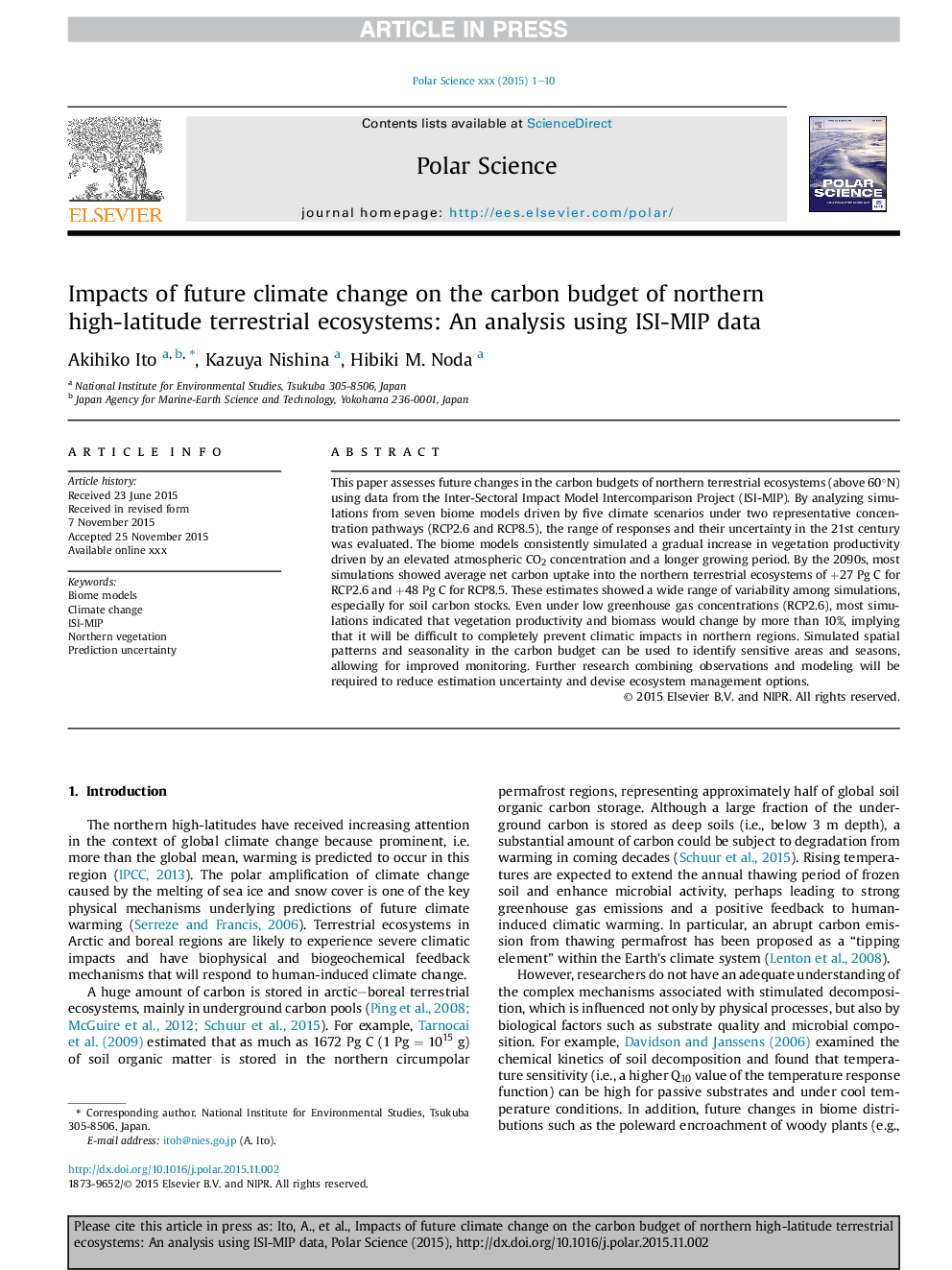| Article ID | Journal | Published Year | Pages | File Type |
|---|---|---|---|---|
| 5780593 | Polar Science | 2016 | 10 Pages |
Abstract
This paper assesses future changes in the carbon budgets of northern terrestrial ecosystems (above 60°N) using data from the Inter-Sectoral Impact Model Intercomparison Project (ISI-MIP). By analyzing simulations from seven biome models driven by five climate scenarios under two representative concentration pathways (RCP2.6 and RCP8.5), the range of responses and their uncertainty in the 21st century was evaluated. The biome models consistently simulated a gradual increase in vegetation productivity driven by an elevated atmospheric CO2 concentration and a longer growing period. By the 2090s, most simulations showed average net carbon uptake into the northern terrestrial ecosystems of +27 Pg C for RCP2.6 and +48 Pg C for RCP8.5. These estimates showed a wide range of variability among simulations, especially for soil carbon stocks. Even under low greenhouse gas concentrations (RCP2.6), most simulations indicated that vegetation productivity and biomass would change by more than 10%, implying that it will be difficult to completely prevent climatic impacts in northern regions. Simulated spatial patterns and seasonality in the carbon budget can be used to identify sensitive areas and seasons, allowing for improved monitoring. Further research combining observations and modeling will be required to reduce estimation uncertainty and devise ecosystem management options.
Keywords
Related Topics
Physical Sciences and Engineering
Earth and Planetary Sciences
Earth and Planetary Sciences (General)
Authors
Akihiko Ito, Kazuya Nishina, Hibiki M. Noda,
